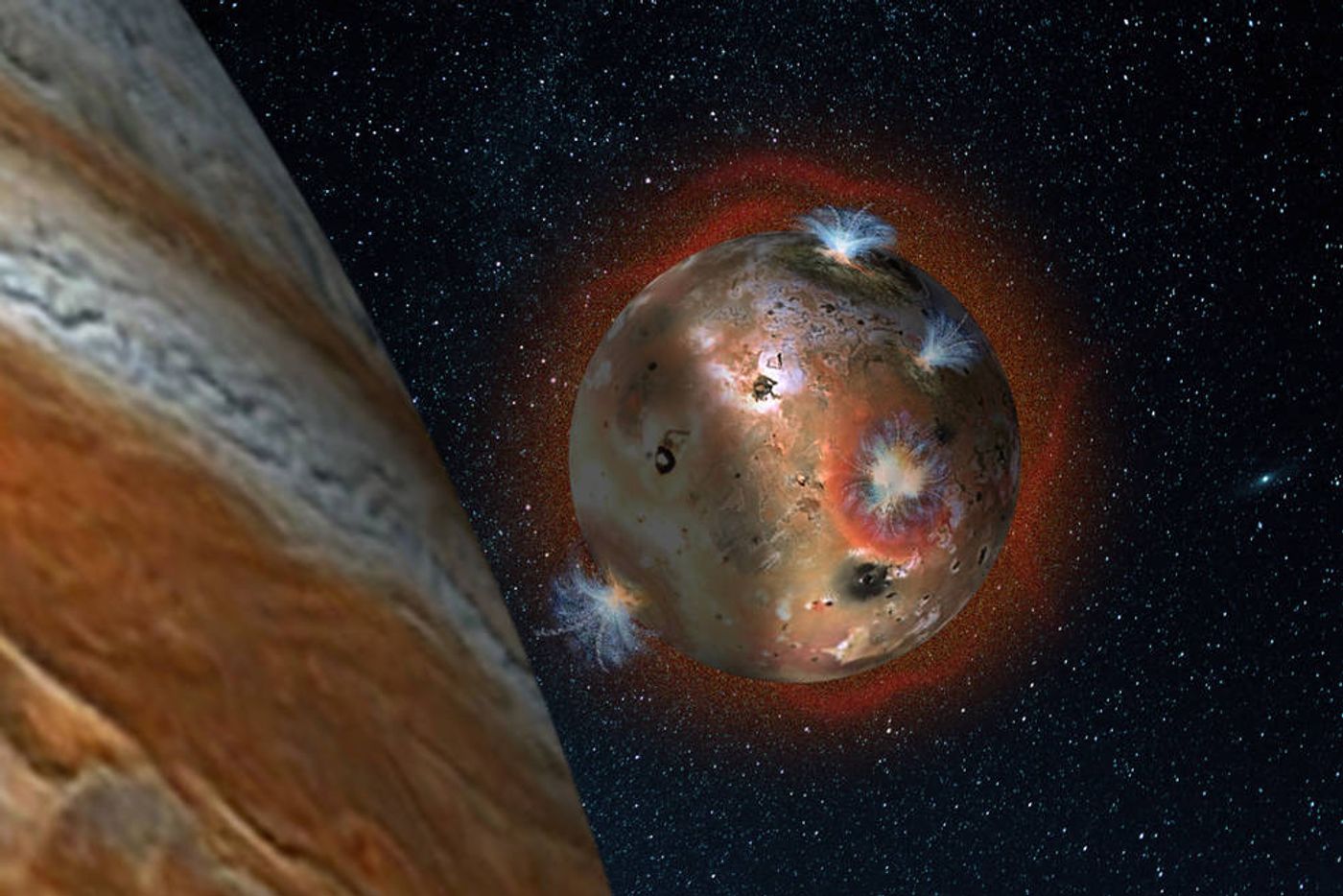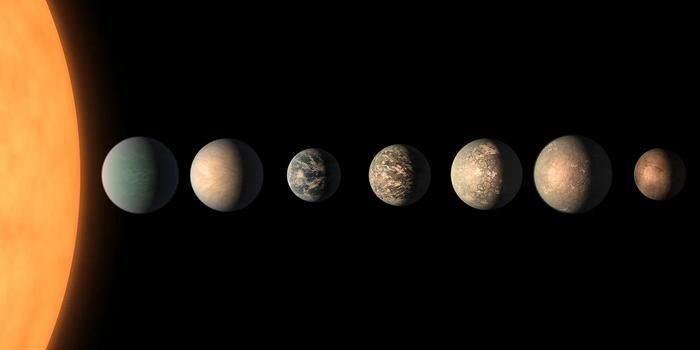Atmosphere of Jupiter's Moon Io Collapses When Eclipsed
One of Jupiter’s moons, Io, is quite the interesting character. It turns out there are two sides to Io’s personality, and while all seems normal when Io is in direct sunlight, Io’s personality really changes when Jupiter gets in the way and Io is eclipsed.

Image Credit: SwRI/Andrew Blanchard
A study published in the Journal of Geophysical Research reveals that as long as Io is eclipsed by Jupiter, the atmosphere appears to collapse in on itself due to the lack of pressure.
It turns out that Io’s atmosphere relies on the pressure generated from the heat from the Sun, and when Jupiter gets in the way of that, the pressure can no longer be sustained, so the atmosphere simply goes ‘poof.’
Io also happens to be the most volcanically-active body in the entire known solar system, which are a result of tidal heating from the gravitational forces at work by Jupiter and other surrounding bodies.
These volcanoes emit a gas known as sulfur dioxide (SO2) and this is what Io’s atmosphere is primarily consisted of. This atmosphere isn’t very thick to begin with, so when Jupiter gets in the way and keeps the Sun from warming the gas, it begins to condense and fall back down to the moon’s surface, which eliminates the atmosphere.
Using the large eight-meter Gemini North telescope in Hawaii and the Texas Echelon Cross Echelle Spectrograph (TEXES), researchers carefully studied the characteristics of Io’s atmospheric activity in November of 2013 as it slowly went into eclipse mode.
The findings were that the atmosphere would “deflate” when the temperatures went from -235º to -270º Fahrenheit. This process happens once every 1.7 Earth days.
“This confirms that Io’s atmosphere is in a constant state of collapse and repair, and shows that a large fraction of the atmosphere is supported by sublimation of SO2 ice,” said John Spencer, a co-author of the new study, also at the Southwest Research Institute.
“Though Io’s hyperactive volcanoes are the ultimate source of the SO2, sunlight controls the atmospheric pressure on a daily basis by controlling the temperature of the ice on the surface. We’ve long suspected this, but can finally watch it happen.”
TEXES proved to be a valuable instrument in observing this process, as it has never actually been recorded before.
Better understanding the characteristics of the things in our solar system help to answer the questions of how we got here and whether or not other forms of life may exist out there.
Source: NASA








